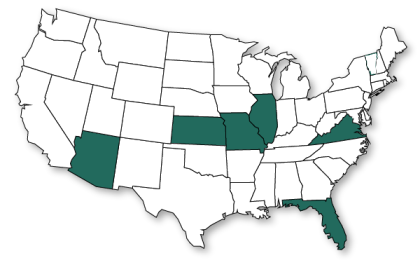If living in the Midwest has taught you anything, it is that the weather can change in an instant – a gorgeous spring day can turn to risky storms in a matter of minutes. Even if you live in an area that you think isn’t at risk of flood damage, preparation is just as critical as with other types of emergencies.
Before we get into how you can prevent, limit or react to flooding, it’s important to note that flood damage is typically not covered by your homeowners or renters insurance. There are separate flood policies available to everyone, whether or not you live in a flood plain. If you do not live in a flood plain, the cost is much less. Your agent at O’Connor Insurance can provide a quote and discuss this with you. Just give us a call at 314.434.0038.
Preparing for a flood
The Federal Emergency Management Agency recommends a number of steps to stay safe during emergencies and limit damage from flooding. You should:
- Build an emergency kit for your family with drinking water and nonperishable food for each member of your family (two-week supply), flashlights, a radio, extra batteries, a first-aid kit, necessary medications, personal hygiene items, and copies of important documents.
- Create a communication plan so family members can reach one another, and practice that plan before an emergency (especially for families with younger children).
- Elevate your furnace, water heater, and electric panel in your home if live in an area with a high flood risk.
- Consider installing “check valves” to prevent floodwater from backing up into the drains of your home.
- If possible, construct barriers to stop floodwater from entering your home and seal basement walls with waterproofing compounds.
Acting during a flood
If a flood is likely in your area, quick action may be necessary to protect your family and property. You should:
- Get information from the radio or television.
- Move immediately to higher ground if there is any possibility of a flash flood. Do not wait for instructions to move.
- If you need to evacuate, secure your home and move essential items to an upper floor. Turn off utilities if instructed to do so, and disconnect electrical appliances. However, do not touch electrical equipment if you are wet or standing in water.
- Do not walk through moving water – it can make you fall. Use a stick to check the firmness of the ground in front of you.
- Do not drive into flooded areas. If you are caught in your vehicle in floodwater, abandon your car and move to higher ground if you can do so safely.
- If you have evacuated your home, do not return until authorities give you permission.
Coping after a flood
Flooding can cause emotional stress along with physical hazards, so be mindful of your own well being and temperament. After the flood clears, there are a few things to consider and resources available to you:
- Floodwater can be contaminated by oil, gasoline, or sewage, so avoid contact as much as possible.
- Make sure your city’s water supply is safe to drink.
- Clean and disinfect everything that was in contact with floodwater.
- The Red Cross has a free book available called “Repairing Your Flooded Home,” which contains useful information as you clean up. It’s available at redcross.org.
- If you have flood insurance, contact the claims center of your provider as soon as possible.
Flooding is one of the most common hazards in the U.S., both in the flood plains and out of them, as we sadly learned last December when record-breaking floods swept through the St. Louis area after 6-12″ rains. So make a plan for it. Don’t be caught off guard when the water level starts to rise.


